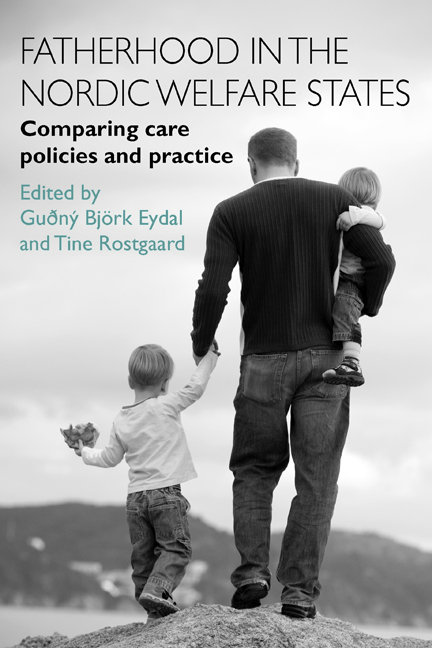Book contents
- Frontmatter
- Contents
- List of tables and figures
- Notes on contributors
- Acknowledgements
- one Introduction
- Theme 1 Fathers, families and family policies
- Theme 2 Fathers in everyday life – culture, work and care
- Theme 3 Constructing fatherhood in different family settings
- Theme 4 Caring fathers and paid parental leave policies
- Theme 5 International reflections on findings
- Conclusions
- Index
sixteen - Parental leave use for different fathers: a study of the impact of three Swedish parental leave reforms
Published online by Cambridge University Press: 04 March 2022
- Frontmatter
- Contents
- List of tables and figures
- Notes on contributors
- Acknowledgements
- one Introduction
- Theme 1 Fathers, families and family policies
- Theme 2 Fathers in everyday life – culture, work and care
- Theme 3 Constructing fatherhood in different family settings
- Theme 4 Caring fathers and paid parental leave policies
- Theme 5 International reflections on findings
- Conclusions
- Index
Summary
Introduction
Fathers’ increased parental leave use has been an objective in Sweden since the introduction of parental leave in 1974. Various strategies have been pursued to reach the goal, and numerous reforms have been introduced. In 1995, one month of parental leave was reserved as a quota for each parent, meaning that the month was forfeited if not used by the same parent. In 2002, another month of quota was reserved for each parent, and a so-called ‘gender equality bonus’ was introduced in 2008, that is, a tax credit for parents who share the leave equally. Almost 90 per cent of Swedish fathers now take parental leave, but even if fathers’ leave has increased substantially over the last decades, the three reforms have had an impact on the number of parental leave days taken by fathers and mothers differently (Duvander and Johansson, 2012a). This study is aimed at going beyond the average number of parental leave days taken by fathers, and determines which fathers contributed to the changes (and non-changes) in leave use after the reforms in question. During the time between the first and last reforms, the expectations and rhetoric around fatherhood also changed considerably, more emphasis being placed on active fatherhood (Klinth, 2008). These expectations possibly differ between groups of fathers, however, as the norms for how to behave as fathers differ. None of the reforms mentioned are directed at specific groups of fathers, and all fathers are entitled to parental leave. Nevertheless, these reforms may involve varying incentives to increase the leave use for different groups of fathers.
This chapter focuses on the effectiveness of such incentives by investigating which groups of fathers responded positively, thereby acting as forerunners by increasing their leave lengths. In addition, are there other groups of fathers lagging behind and remaining unaffected by the reforms? Even if Sweden has seen a trend towards increased sharing of leave between mothers and fathers, presumably together with increased paternal involvement in the care for the child, Swedish fathers are not a homogeneous group, and fathers are likely to respond to policy reform differently. This chapter focuses on the leave use among fathers with different education levels, in different work sectors, and fathers in families of different birth origins.
- Type
- Chapter
- Information
- Fatherhood in the Nordic Welfare StatesComparing Care Policies and Practice, pp. 347 - 370Publisher: Bristol University PressPrint publication year: 2014
- 5
- Cited by



